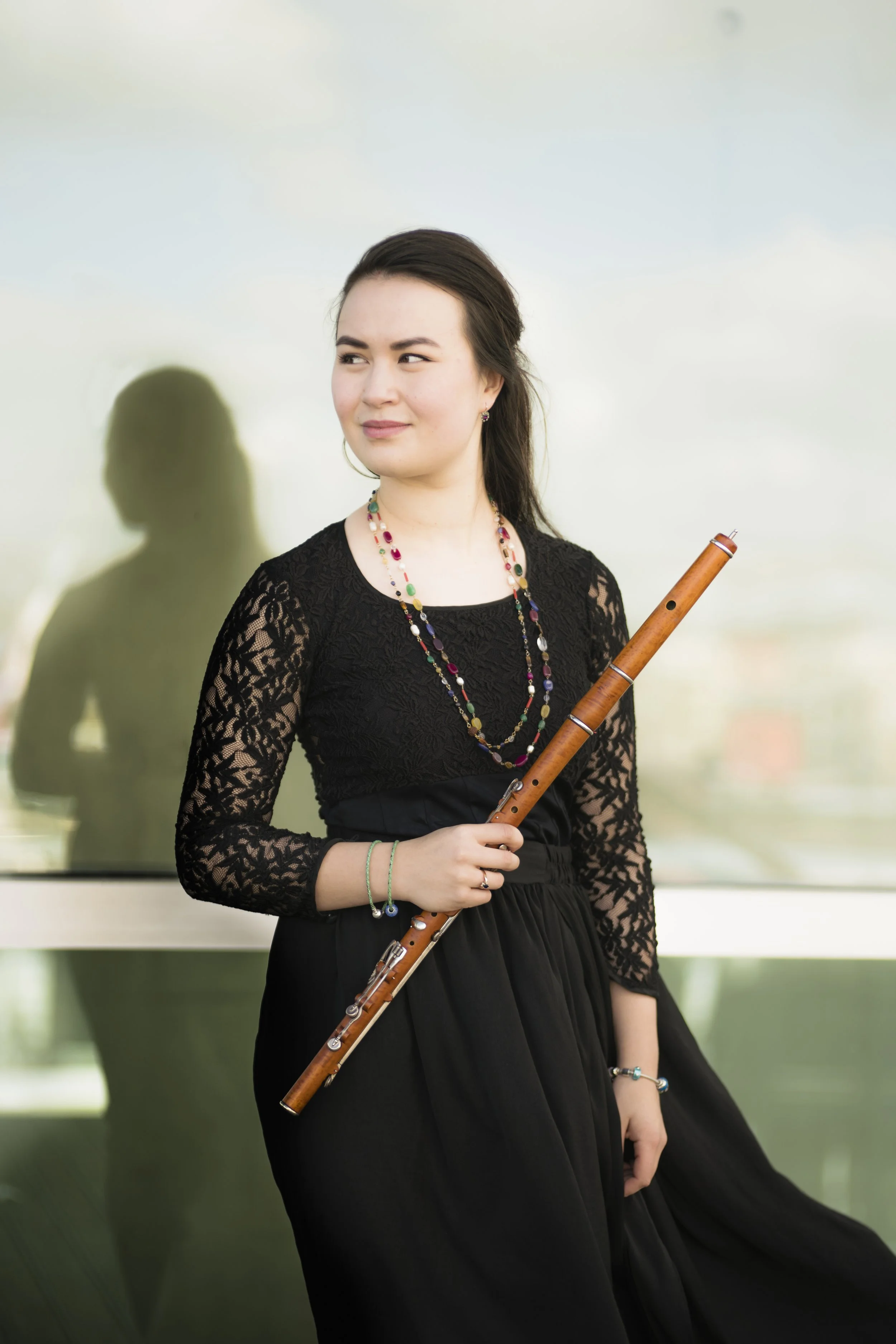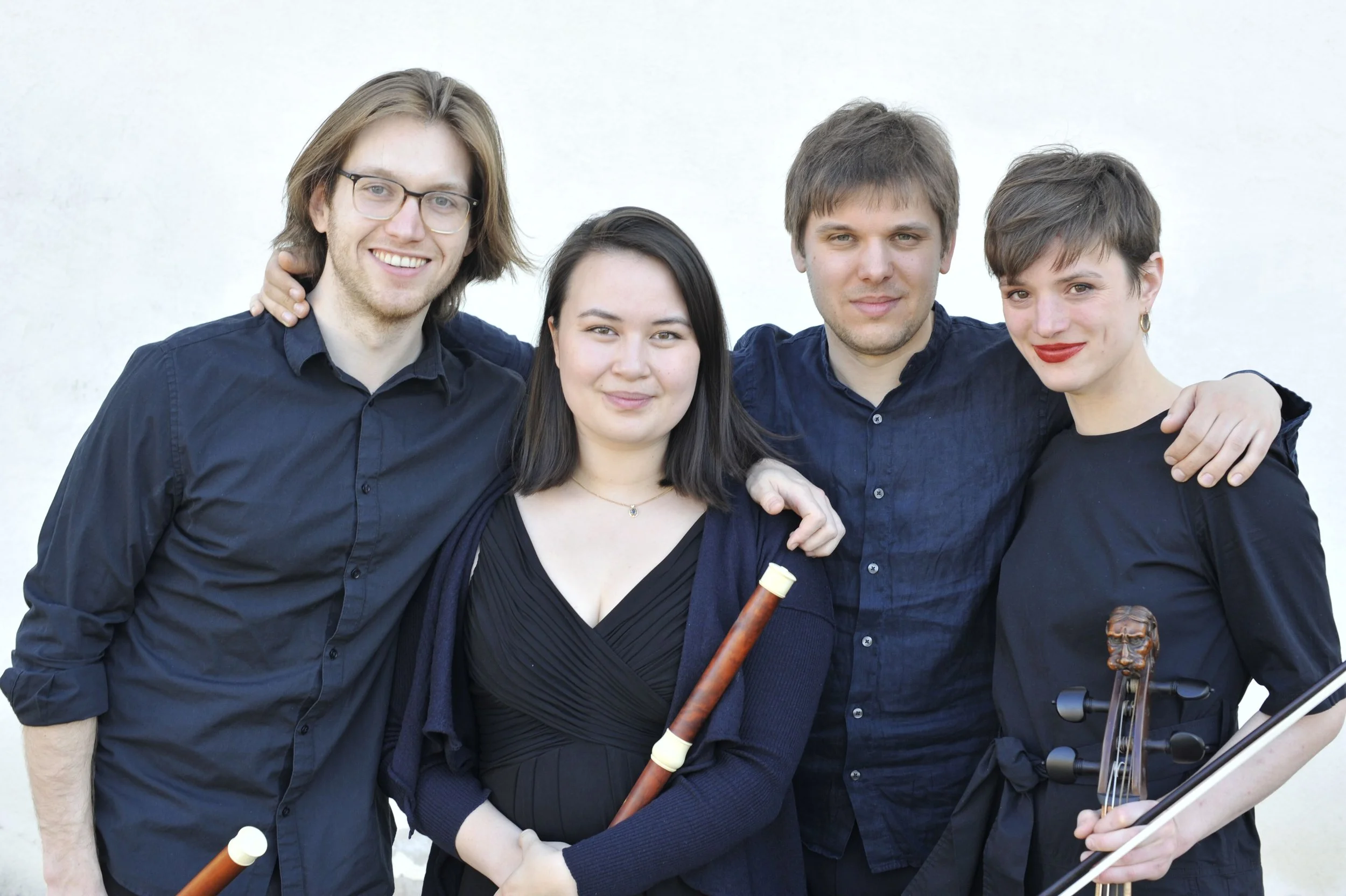Bohemian Sonatas for cello piccolo and fortepiano
The artists
Artem Belogurov, Stein fortepiano (copy by Gerard Tuinman)
Octavie Dostaler-Lalonde, baroque cello by J.M. Alban in high tuning (G-d-a-e’)
The instruments
The cello is a beloved and familiar instrument, whose shape and tuning are standardised today. Yet this modern familiarity hides an origin that was rich in variety. Large parts of the cello’s earlier years and development remain obscure today, and even a cursory exploration reveals a wide array of sizes, techniques, tunings, number of strings and names for the bass instrument of the violin family. More recently, the baroque cello revival helped to popularise many of the violoncello's early techniques and brought organological evidence to light. One type of “violoncello” that emerges from various sources, is an instrument that was held between the legs, like the cello, but was of a smaller size and higher tuning, lying one fifth above the standard cello tuning: G-d-a-e’. In addition to allowing the player to reach high registers more easily, this set up produces a limpid, light and agile sound that has its own expressive possibilities. This tuning fits the compass of a significant portion of the repertoire for violoncello from Germany around the middle of the 18th century, and the smaller sized cello by Johann Michael Alban used for this recital sounds at its best in that tuning. It was therefore natural to bring these elements together and explore what the sound of this wonderful instrument would bring to Galant music, allowing one to present the elegance idiomatic to this style, with ease and clarity of tone. Artem and Octavie have performed this program during the famous Utrecht Early Music Festival last August, using two very special instruments: a small cello built by J.M. Alban in ca. 1700, and a copy of a Stein fortepiano with bare-wooden hammers. The piano’s wooden action produces a bright and vivid sound that fits the tone of the cello piccolo perfectly in this program.
The program:
Franz Benda and Christoph Schaffrath both worked in Berlin at the court of Frederick the Great. The former made a name for himself as a virtuoso violinist and the latter as an organist and keyboard player. Both, as was customary, composed and published their works. The sonata by Schaffrath is one of the earliest surviving sonatas for obbligato keyboard and cello, predating Beethoven’s Op. 5 by more than 30 years. Another early example of obbligato keyboard and cello sonata is the work by Johann Christoph Friedrich Bach. Its original version was sadly lost during the second world war, but a 19th century arrangement transposed from A major to D major survived. This program presents the musicians’ own version of what the piece might have sounded like in the original key if a higher tuning was used. Anton Filtz, a successful cellist and prodigious composer, lived a short life and worked at the famous Mannheim orchestra. The cover page of his Sonatas Op. 5 suggests that they can be performed on either cello or violin and they fit the open strings that both the high cello tuning and the violin share perfectly.

















